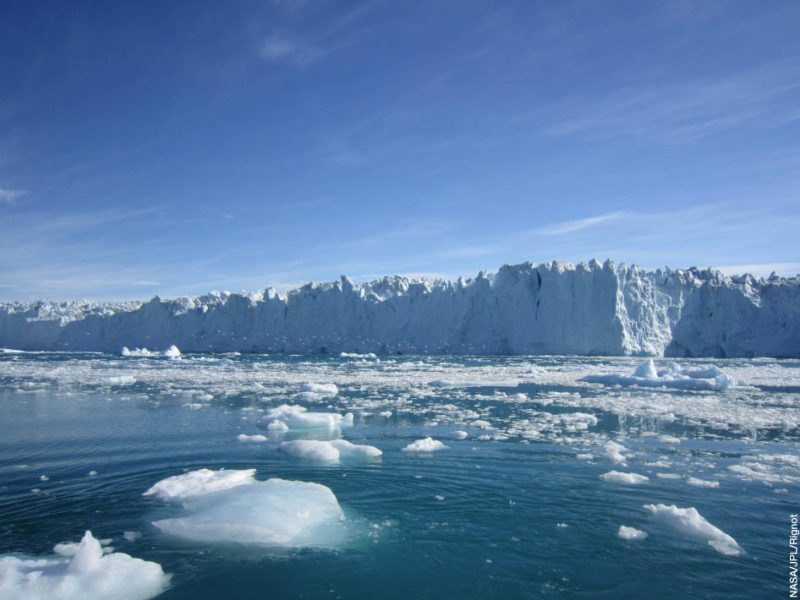
Earth has shivered through at least five major ice ages. But the most extreme might have been the Marinoan Ice Age – lasting from 654 to 635 million years ago – when, some scientists believe, glaciers stretched from pole to pole. This is the Snowball Earth hypothesis, considered by many scientists since the 1960s. And, this month (April, 2023), an international group of researchers from China, the U.S. and the U.K. said they’ve found evidence that relates to the Snowball Earth idea. They said Earth might have been more of a slushball than a snowball. And they said that pockets of more temperate conditions – and slushy waters – might be what allowed life to survive.
Nature Communications published the group’s peer-reviewed findings on April 4, 2023.
Snowball Earth or slushball Earth?
The team of researchers, including from the China University of Geosciences, the University of Cincinnati and the University of St. Andrews, studied rock formations in the eastern Shennongjia Forestry District of China’s Hubei Province. They found intriguing evidence that implies Earth was not completely frozen after all. Rather, there were patches of open water in some shallow mid-latitude seas.
Lead author Huyue Song from the China University of Geosciences said:
We present a new Snowball Earth model in which open waters existed in both low- and mid-latitude oceans. We found that the Marinoan glaciation was dynamic. There may have existed potential open-water conditions in the low and middle latitudes several times. In addition, these conditions in surface waters may have been more widespread and more sustainable than previously thought and may have allowed a rapid rebound of the biosphere after the Marinoan Snowball Earth.
Thomas Algeo, a professor of geosciences at the University of Cincinnati’s College of Arts and Sciences, said:
We called this ice age Snowball Earth. We believed that Earth had frozen over entirely during this long ice age. But maybe it was more of a slushball Earth.
Seaweed fossils provide clues
When the scientists examined the rock samples they had collected, they found something interesting: fossils of ancient seaweed. The fossils, specifically of a species of seaweed called benthic phototrophic macroalgae, date back more than 600 million years. The researchers found them in samples of black shale rock. Why is this significant?
This type of seaweed lives on the bottom of the sea and needs sunlight for photosynthesis. The date of the shale indicates that the seaweed existed during the period of the Marinoan Ice Age. But how could that be, if the seas and oceans were completely covered by ice? Indeed, it probably couldn’t. Instead, it suggests that there must have been pockets of open water.
Researchers said that these pockets likely occurred during the late stages of the ice age. Both single-celled and multi-celled organisms could have thrived in these oasis-like pockets of open water.
The paper said:
These findings indicate that habitable open-ocean conditions were more extensive than previously thought, extending into mid-latitude coastal oceans and providing refugia for eukaryotic organisms during the waning stage of the Marinoan Ice Age.

Oases caused end of Snowball Earth period
So how did the Snowball Earth age end? What caused the glaciers to eventually retreat back to the poles? The researchers say it was the oases – the pockets of water – that did it. Algae in the water released carbon dioxide, which gradually melted the ice in the equatorial and tropical regions. As Algeo noted:
One of the general take-home messages is how much the biosphere can influence the carbon cycle and climate. We know that carbon dioxide is one of the most important greenhouse gases. So we see how changes in the carbon cycle have an impact on the global climate.
As for what caused the ice ages to begin with, Algeo said it may have involved microorganism that removed carbon dioxide instead of creating it:
We don’t know for sure what triggered these ice ages, but my suspicion is it was related to multicellular organisms that removed carbon from the atmosphere, leading to carbon burial and the cooling of the Earth. Today, we’re releasing carbon quickly in huge amounts and it is having a big impact on global climate.
Bottom line: Scientists said Snowball Earth might have been more of a slushball. And they said pockets of more temperate conditions – and slushy waters – might be what allowed life to survive.











